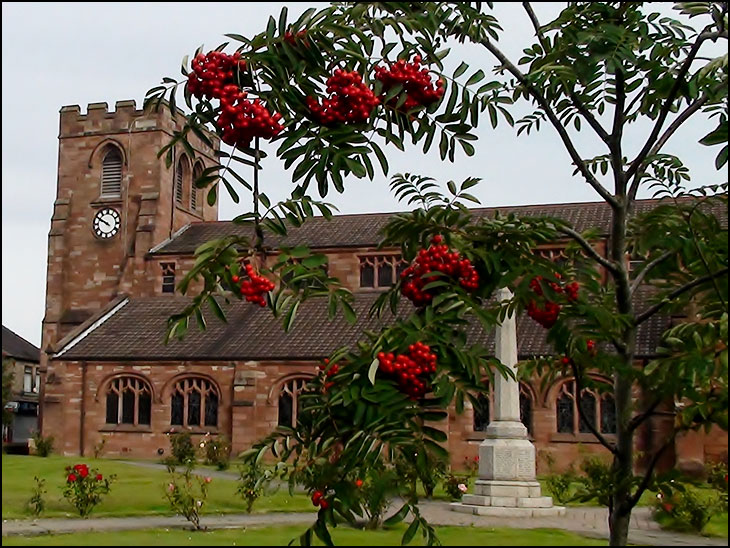Photo-a-Day (Thursday, 17th September, 2015)
Wiggin Tree Berries
A cracking shot, Mick.
Good 'un...
Excellent.
I like this one Mick, nice photo.
lovely. it all looks so clean. As a child I thought this church was black
excellent photo mick
Very beautiful photo ,Thank you Mike.
A bit blurry, if you ask me.
It works!
The Wiggin tree berries look a bit blurred to me as well but its not a photo contest is it.
It probably was black when you were a child, kath, .. if you're of a certain age... ;-)
Once the Clean Air Act came in, steam trains vanished, and there were fewer pits and factories belching smoke, it was thought worthwhile to clean smoke-begrimed public buildings up - as they wouldn't immediately go black again. So many public buildings and churches were cleaned - St Thomas' probably among them.
It wasn't always the best thing to do - most of the buildings cleaned had been built in soot-laden atmospheres, so the outer faces of their stonework soon gained a crust which stopped pollution penetrating deeper into the blocks. When that crust was cleaned off - sometimes with quite harsh blasting systems - it left the 'virgin' stonework which was exposed at the mercy of unseen pollution - acid rain, etc.. Some older buildings suffered more - their stonework had weathered over the centuries, sometimes, depending on the stone, resulting in irregular or pitted surfaces. The sooty crust which settled on their surfaces after the industrial revolution followed the contours of the stones. When surfaces like that were cleaned off substantial chunks of surface stone might be removed - sometimes ruining more intricate carvings.
Also, if water was used under pressure during the cleaning, it would penetrate beneath the surface of the stone, and rainwater, which would normally fall off the surface of the stone, could be drawn into the blocks, where it would be subject to freezing in a frost... forcing them to split.
Lovely photo. Rowan trees can be seen around many churches, they are supposed to keep evil spirits away.
The wigan tree on the towns court of arms is not depicted as the Rowan tree but the mountain ash tree
